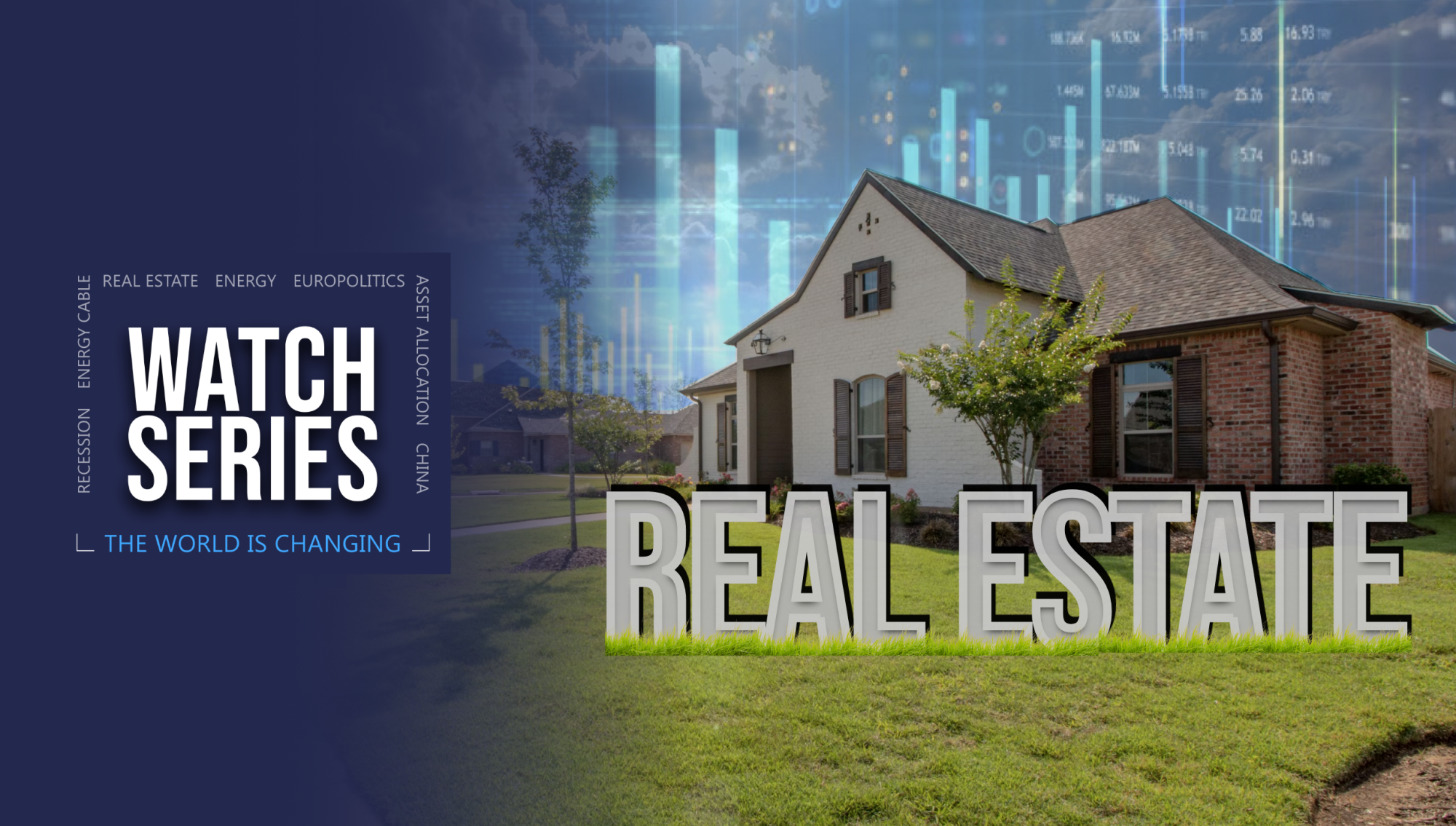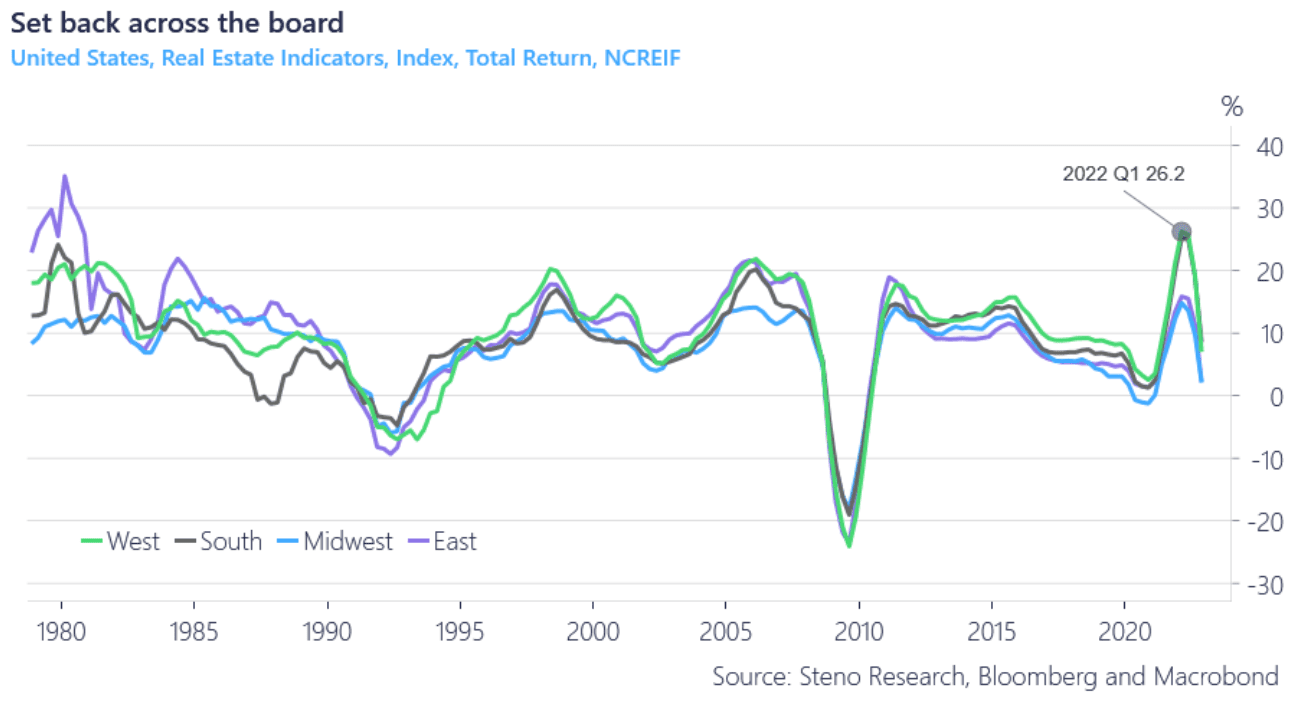CRE Watch: Illiquid trouble stuck on the books

Welcome to our first commercial real estate Watch’, where we’ll try and lay open the troubles on everyone’s lips, and assess if it really is such a biggie.
We’ll address the following questions concerning the troubled sector:
- What’s the latest? – A sitrep
- Is CRE a systemic issue?
- What are the market implications?
Whereas the stress in the banking sector has waned, and the run against particularly small and regional banks has been backstopped by some confidence-infusing liquidity facilities, these same banks have actively participated in the financing of commercial properties. For a sector already under pressure from vacancy and refinancing costs to name a few, the probability of persistent pressure on banks’ balance sheets could not have been timed worse.
What’s the latest? – A sitrep
Across the US, commercial real estate (CRE) has sharply reversed the covid boom. CRE isn’t exempt from the challenges facing businesses given the current macroeconomic environment. Largely attributed to soaring refinancing costs and increasing vacancy, these properties’ net operating income (NOI) has been suppressed and the appraisal value has thus deteriorated.
Albeit, The National Council of Real Estate Investment Fiduciaries (NCREIF), and their indexes which track the values and returns for institutionally owned commercial real estate (CRE), are still not in negative territory YoY (total return; dividends making up for lost appraisal value), but the trend reversal is significant, and we expect to see further decay in CRE.
Chart 1: The West and South holding up better relatively (for now)

As the banking stress has waned in news value, commercial real estate has taken over the baton. In this article, we’ll try and sort fact from fiction and wisen up on what is really moving beneath the surface.

0 Comments